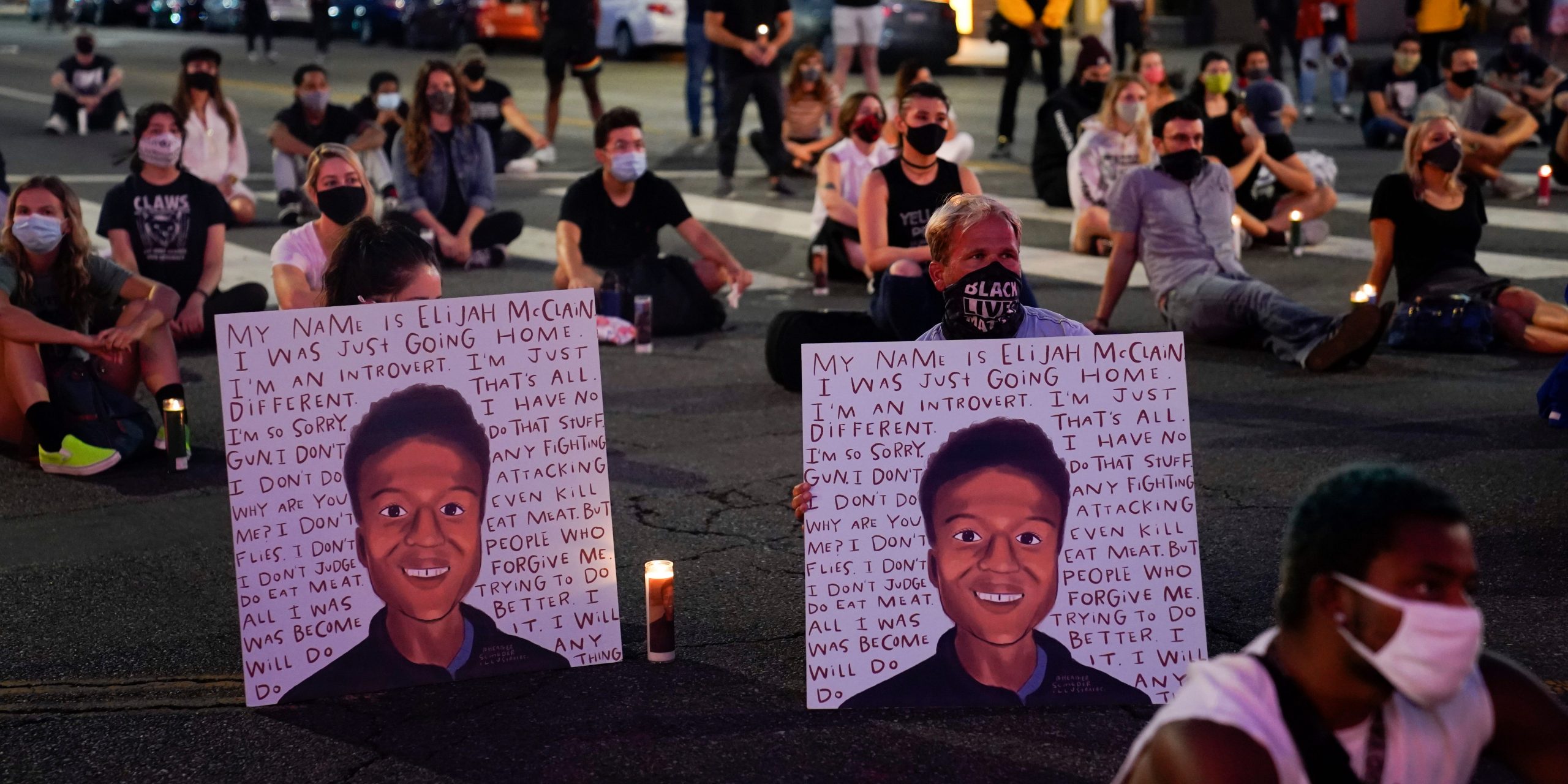
AP Photo/Jae C. Hong, File
- Police officers stopped Elijah McClain in August 2019, accusing him of looking “suspicious.”
- The 23-year old Black man died days later, after a violent encounter with police and paramedics.
- A new independent probe found that police and paramedics made a series of mistakes preceding his death.
- Visit Insider’s homepage for more stories.
Colorado police officers and paramedics who stopped and arrested Elijah McClain in August 2019 made a series of critical mistakes that preceded the 23-year-old’s death, a new investigation has found.
An independent probe into the incident that made national headlines found the Aurora police officers who responded to a report of a “suspicious” person “walking and waving his arms” had no legal basis for stopping, frisking, or using a chokehold against McClain, and that the paramedics who then sedated him with ketamine, did so “without conducting anything more than a brief visual observation.”
McClain, a Black man, died on August 30, 2019, six days after police officers used force to detain him and paramedics gave him medication to “calm” him down. He suffered a cardiac arrest on the way to the hospital and was taken off of life support by his family days later.
The 157-page report, which was commissioned by the Aurora City Council and conducted by a panel of medical and legal experts, also found the Aurora Police Department’s initial investigation into the incident, led by detectives in the Major Crimes Unit was “flawed and failed to meaningfully develop a fulsome record.”
According to the report, the interviews conducted during the initial investigation “failed to ask basic, critical questions” about the officers’ use of force against McClain and instead, “frequently appeared designed to elicit specific exonerating ‘magic language’ found in court rulings.'”
"It is hard to imagine any other persons involved in a fatal incident being interviewed as these officers were," investigators said about the department's probe.
Monday's independent investigation found that the initial stop of McClain was questionable as "none of the officers articulated a crime that they thought Mr. McClain had committed, was committing, or was about to commit."
In the department's initial report, officers said they stopped McClain because he was acting "suspicious," was wearing a mask and waving his arms, and was in an area with a "high crime rate," - none of which are sufficient reasons to establish reasonable suspicion under the law, according to the report.
McClain's family said he wore an open-faced ski mask because he was anemic and would sometimes get cold.
The officers' decision to frisk McClain was also mishandled, according to the authors of the report, who said they "were not able to justify sufficient evidence that Mr. McClain was armed and dangerous in order to justify a pat-down search."
Video and audio from the officers' body cameras reveal McClain "crying out in pain, apologizing, explaining himself, and pleading with the officers" during the encounter, the report said.
When paramedics arrived on the scene, they injected McClain with a sedative, accepting the responding officers' impression that McClain was in a state of "excited delirium," without corroborating that impression through "meaningful" observation or examination.
McClain was injected with a 500 milligram dose of ketamine based on paramedics' inaccurate estimation of McClain's weight. The paramedics guessed that the 5-foot-7, 140-pound McClain was about 190 pounds, and administered the sedative thusly.
"Higher doses can carry a higher risk of sedation complications, for which this team was clearly not prepared," the report said.
At the time of the injection, McClain reportedly had not moved or made any sounds for nearly one minute.
Though McClain died in 2019, anger over his death was reignited in 2020, as millions of Americans marched in the streets in support of racial justice and police accountability following George Floyd's murder by cops in Minneapolis. In June 2020, at the height of the protests, Colorado lawmakers reopened the investigation into McClain's death as it once again drew scrutiny.
Monday's probe, however, does not conclude that implicit or unconscious bias played a role in McClain's death.
"In looking at this single incident, the Panel has insufficient information to determine what role, if any, bias played in Aurora Police officers' and EMS personnel's encounter with Mr. McClain," the report said.
The authors did, however, urge the city of Aurora to assess its efforts to ensure bias-free policing, while acknowledging some of the factors that might have contributed to the incident.
"Research indicates that factors such as increased perception of threat, perception of extraordinary strength, perception of higher pain tolerance and misperception of age and size can be indicators of bias," the report said.
The panel recommended overhauling the police department's accountability system and review policy," and increasing "training and practice of arrest standards and use of force."
Two of the officers involved in McClain's death remain employed by the department, but in non-public-facing jobs, according to the Denver Post. The third officer involved was later fired for "replying 'haha' to a texted photo showing other Aurora police officers re-enacting one of the chokeholds used on McClain at his memorial site," the paper said.